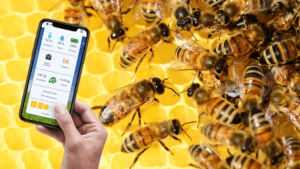
Honey Bees and cellular SIM card technology, how are they connected
This article will highlight how remote sensing technology has become a vital component in the healthy production of bee colonies and honey production while using
3G
4G
5G
API
Application Programming Interface
An API is a computing interface with a set of routines, protocols, and tools for building software applications. It defines how the interactions between multiple software intermediaries should be.
APN
Access Point Name
An APN establishes a connection to the gateway between the carrier’s cellular network and the public internet. The APN has the network settings a device needs to connect to a network provider; it finds the IP address that the device is identified with on the network, determines if a private network is needed, chooses the correct security settings, and more.
CIoT
Consumer IoT
The Consumer IoT refers to the Internet of Things connected devices designed for the consumer market such as smartphones, wearables, fashion items and smart home appliances. All these devices collect and share data through the Internet.
CMP
Connectivity Management Platform
A Connectivity Management Platform is a comprehensive platform with tools to manage connectivity services and IoT/M2M SIM cards used globally and through their entire life cycle. It has the capability aggregate multiple networks and support multiple connectivity technologies.
Connected Home
A Connected Home also called a smart home, is a residence that uses internet-connected devices to enable the remote monitoring and management of appliances and systems, ranging from communications and entertainment to healthcare, security, lighting, heating and further home automation.
Dynamic Pool
In a Dynamic Pool the included data volume of one SIM Card is multiplied by the number of SIM Cards in the pool.
EP
Enterprise Portal
An Enterprise Portal is an interface for enterprise customers to manage their own SIM cards connectivity and have access to related SIM cards usage and master data.
eSIM
embedded SIM
An embedded SIM is an embedded chip in a device that is equivalent in function to a Mini or Micro SIM card. It stores data that is needed for your device to connect to and use the Operator’s network, like traditional SIMs do. But an eSIM can be reprogrammed to change numbers or carriers while a traditional SIM can’t because it needs to be replaced.
GPRS
General Packet Radio Service
GPRS is an expansion of GSM (Global System for Mobile Communication) host networks. It is basically a packet-oriented mobile data standard on the 2G and 3G cellular communication network’s global system for mobile communication. GPRS was one of the main advances that empowered a cell system to interface with Internet Protocol systems, enabling high-speed mobile datacom usage.
GPS
Global Positioning System
GPS is a system of satellites and radio transmissions that can be used to locate GPS-enabled hardware anywhere on the planet to a very good accuracy.
GSM
Global System for Mobile Communications
GSM is the most widely used digital cellular network and the basis for mobile communication such as phone calls and the short message service (SMS).
ICCID
Integrated Circuit Card Identifier
Integrated Circuit Card ID is a unique number that identifies a SIM (Subscriber Identity Module) card in a GSM network.
ICCIDs are defined as the Primary Account Number. They are stored in the SIM cards and printed on the SIM card body. A full ICCID is 19 or 20 digit number including the Telecommunications industry code, country code, mobile network code and a group of digits that uniquely identifies the SIM.
IIoT
Internet of Industrial Things
Industrial IoT is a subset of the larger IoT that focuses on the specialized requirements of industrial applications, such as manufacturing, energy, oil, gas, utilities and any smart devices installed around business areas.
IMEI
International Mobile Equipment Identity
The
International Mobile Equipment Identity is a unique number that identifies a
hardware device to the network when its checked against a global IMEI database.
IMEI numbers are produced by the GSMA and provided to manufacturers to be
assigned to their devices. They are usually printed within a device’s battery
component.
IMSI
International Mobile Subscriber Identity
An IMSI is an internationally standardized unique number to identify a mobile subscriber. The IMSI is defined in ITU-T Recommendation E.212. The IMSI consists of a Mobile Country Code (MCC), a Mobile Network Code (MNC) and a Mobile Station Identification Number (MSIN). An IMSI is usually presented as a 15 digit number, but can be shorter (not longer).
IoE
Internet of Everything
The Internet of Everything is the connection between people, things, data and processes combined into a common interrelated system, the aim of which is to improve experiences and make smarter decisions. Today, everything can be connected with everything, creating a new distributed ecosystem that goes beyond the familiar IoT (Internet of Things) concept. Any object can be outfitted with digital features and connected to the common network of other objects, people and processes in order to generate valuable information, exchange it and facilitate relevant decision-making.
IoMT
Internet of Medical Things
The Internet of Medidal Things is the IoT healthcare ecosystem to help health care organisations achieve better patient outcomes.
IoT
Internet of Things
The IoT refers to a network of electronic devices also called objects (such as sensors and actuators) that collect some kind of data autonomously based on physical World events from sensors that are attached to them. These objects are connected to the Internet so that they can send the data they collect from sensors to a larger, more powerful processor or server, becoming active participants in various public, commercial, scientific, and personal processes.
IoT module
An IoT module is a small device embedded in objects, things and machines that is responsible for connecting virtually anything to wireless networks to send and receive data.
IP Address
Internet Protocol Address
An IP address is a numerical label assigned to each device connected to a computer network that uses the Internet Protocol (IP) for communication. An IP address is used for network interface identification and location addressing.
LTE
Long Term Evolution
LTE is a standard for 4G wireless broadband technology that offers increased network capacity and speed to mobile device users.
M2P
Machine to People
Machine to People refers to the connection stablished between a machine (such as a computer, mobile device, or digital sign) and a person to transfer information. Machines get data and report it to be then analysed and actions taken based on informed judgements by people.
MCC / MNC
Mobile Country Code / Mobile Network Code
The Mobile Country Code (MCC) and Mobile Network Code (MNC) fields together specify which carrier you are using. Each carrier in the world has their own unique MCC and MNC value pair.
Mobile / Cellular Network
A Mobile or Cellular network is a radio network distributed over land areas called cells, each served by at least one fixed-location transceiver, known as a cell site or base station. Each cell within a cellular network uses a different set of frequencies from neighboring cells, to avoid interference and provide guaranteed bandwidth within each cell.
MO
Mobile Originated SMS
A Mobile Originated message (SMS MO) is a mobile message routed from an end user’s mobile device and delivered to a mobile device or an application. In the latter case, incoming messages can be seen over a specialized web interface, which usually offers additional reporting and analytics abilities. Incoming messages can be forwarded to SMPP, HTTP push or pull, or email. Also, they can trigger further actions – an automatic reply, opening of a support ticket etc.
MT
Mobile Originated SMS
A Mobile Terminated message (SMS MT) is a mobile message routed from a client or an application and delivered to the end user’s mobile phone or device. The word Terminated means that the message is terminated (delivered) on a mobile device. It is also known as an Outbound SMS.
MVMO
Mobile Virtual Network Operator
A Mobile Virtual Network Operator is a company that provides mobile phone services but does not have its own licensed frequency allocation of radio spectrum, nor does it necessarily have the entire infrastructure required to provide mobile telephone services.
Network Interface
A Network Interface is the point of interconnection between a computer and a private or public network. While it is often a hardware (NIC-Network Interface Card), it can be implemented as a software too.
Network Provider
A Network Provider or Mobile Network Operator is a provider of wireless communications services that owns or is able to supply and control all the elements necessary to deliver services to end-users, including radio spectrum allocation, wireless network infrastructure and other necessary components.
Network Repository
A Network Repository is an archive that maintains an update of all the networks (Mobile Country Codes/Mobile Network Codes – pairs) a network Operator has roaming agreements with.
Network Slicing
A Network Slicing is a type of virtual network architecture that transforms a network into a set of logical networks on top of a shared infrastructure. It provides an end-to-end secure virtual network encompassing not just networking but storage and computing functions too.
Price plan
A Price Plan is the rate to apply for the usage of a service (voice, data, sms and events, eg: signalling, API calls).
Provisioning
Provisioning refers to the steps taken after commissioning on an individual thing level (mapping EID/ICCID to IMSI, change subscription in HLR).
Rating Plan
A Rating Plan describes the pricing model offered by a SIM card provider to determine the cost of data services used by the customers.
Roaming
Roaming is a term that refers to the ability of a mobile phone user to use his mobile phone for making or receiving voice calls, sending or receiving messages and data while travelling outside the coverage of his mobile service provider. The mobile phone uses the subscriber’s identity to access the network in the visited country.
Roaming Partner
A Roaming Partner is a grouping of multiple physical networks into one logical network.
Roaming Policy
A Roaming Policy is a whitelist of one or more networks that can be added on top of the roaming profile. Several policies can be applied per subscriber. The policy overrides the profile.
Service Profile
A Service Profile describes an allowed combination of service settings (service on/off) per interface provider (e.g. Data On/Off, SMS-MO On/Off, SMS-MT On/Off, …)
SIM
Subscriber Identity Module
A SIM is an integrated circuit which stores an international mobile subscriber identity number (IMSI) and other data related to a subscriber.
Smart City
A Smart City is a urban area that uses different types of electronic Internet of Things (IoT) sensors to collect data, analyse it and then use insights gained to increase operational efficiency across the city by optimizing the city functions, driving economic growth and improving quality of life for its citizens.
Smart Factory
The Smart Factory is defined as a factory where physical production processes and operations are combined with smart digital technology, smart computing and big data to improve efficiency through automation and self-optimization.
Smart Farming
Smart Farming is the concept of managing the agricultural industry with modern technology infrastructures to increase the productivity of agricultural products in quantity and quality and in an efficient way.
Smart Grid
A Smart Grid is a modern power generation and distribution infrastructure which can automate and manage the increasing complexity and needs of electricity in the 21st century. It aims to support and integrate renewable energy sources like solar, hydro and wind. Empower consumers with real-time information about their energy consumption and assist utility companies to reduce costs and outages.
Smart Manufacturing
Smart Manufacturing refers to the use of modern real-time technology with Internet connected devices and machinery in the manufacturing line, to automate processes that increase the production and the efficiency in the production of goods which are to be sold.
Smart Meter
A Smart Meter is an electronic device that remotely records real consumption of energy, gas, water and other utility services. Smart Meters typically record data near real-time and report in short intervals throughout the day.
Static Pool
A Static Pool allows you to insert as many SIM Cards as you want which use the data volume of the pool together.
Zone
A Zone is a list of networks (=Network Groups) combined by political/geographical criteria (countries, regions, etc.).
Zone Model
A Zone Model is a specific combination of Zones meeting the requirement that each Network appears only once in a Zone.
Zone Price Plan
A Zone Price Plan is a price plan based on a zone model.
¿Estás interesado en otro modelo de simHERO?
Existen muchos caminos para llegar a tu destino. De modo similar, simHERO ofrece dos modelos de negocio asociados a nuestra conectividad a IoT personalizada, en función de tus requisitos comerciales.
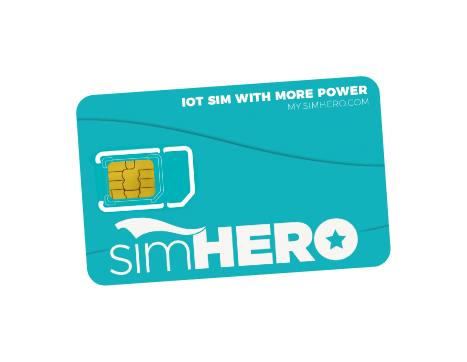
Vende simHERO como complemento de tu dispositivo de consumo. Nosotros nos ocupamos del proceso de facturación para nuestros usuarios finales que gestionan sus tarjetas SIM dentro del modelo simHERO PREPAID, mientras tú te beneficias de nuestra comisión de ventas.
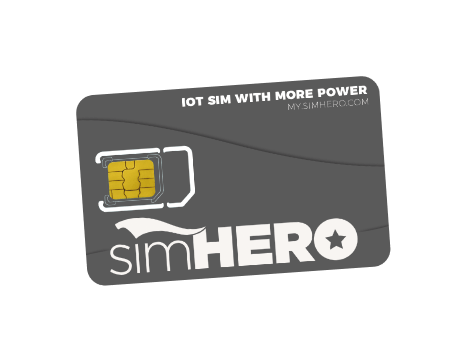
Vende la conectividad simHERO integrada en tu servicio y ofrece un producto completo a tus usuarios finales. Gestiona plenamente todas tus tarjetas SIM y crea tu propio proceso de compra y facturación según más te convenga.
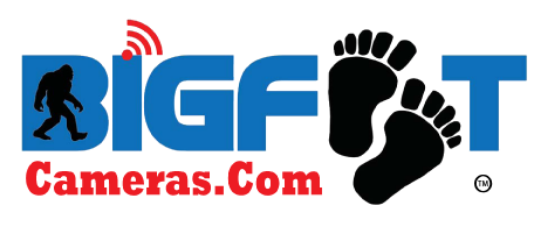
Stan Love – Western Recreation Industries, Inc.
Revendedor desde

This article will highlight how remote sensing technology has become a vital component in the healthy production of bee colonies and honey production while using
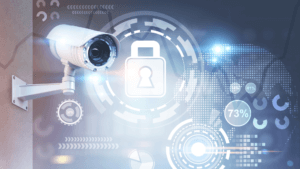
In this blog post, we will discuss why Cellular Security Cameras are currently becoming more and more popular, and we will also show why

The mobile positioning system for hunting & sport dogs In our new series, we will introduce our simHERO partners, their products, and how the IoT
simHERO aspira a la excelencia y la calidad. Por este motivo, tratamos de asociarnos con las redes móviles más consolidadas del mundo y ampliar continuamente nuestras colaboraciones para mejorar tu conectividad a IoT allí donde la necesites.
Si deseas despejar con nosotros el camino que quieres seguir, introduce tu información de contacto o solicita sencillamente una llamada a uno de nuestros agentes.